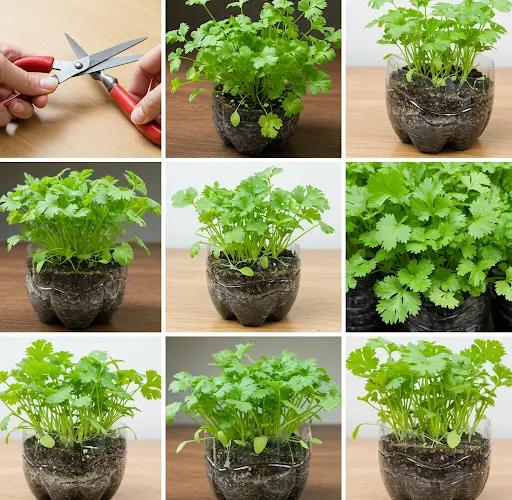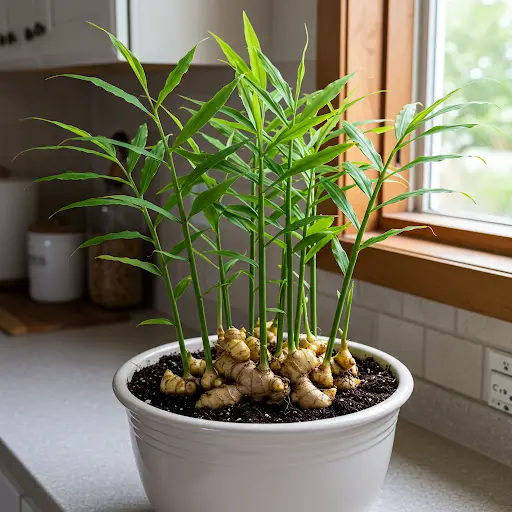Recycle Plastic Bottles to Grow Fresh Coriander at Home
In today’s eco-conscious world, finding sustainable ways to grow your own food is more important than ever. One creative and space-saving method that’s both practical and environmentally friendly is using recycled plastic bottles to grow fresh coriander at home. Not only does this approach reduce plastic waste, but it also provides a steady supply of aromatic, homegrown herbs for your kitchen.
Coriander (also known as cilantro) is a fast-growing herb that thrives in containers. It requires little space, moderate care, and grows quickly—making it perfect for urban gardens, balconies, windowsills, or small patios. With a few empty plastic bottles, some soil, and coriander seeds, anyone can enjoy a lush, green herb garden in even the smallest of spaces.
Why Use Plastic Bottles for Gardening?
Plastic bottles are one of the most common household wastes. Instead of throwing them away, you can repurpose them into functional mini-gardens. Here’s why this method is so effective:
-
Eco-friendly: Reduces plastic waste and promotes upcycling.
-
Budget-friendly: No need to buy pots—just reuse what you already have.
-
Space-saving: Ideal for vertical gardens or hanging setups.
-
Portable: Lightweight containers can be moved around for optimal sunlight.
-
Perfect for beginners: Easy setup and low maintenance.
This method is especially great for renters, students, or anyone without access to a yard.
Materials You’ll Need
-
Empty plastic bottles (1.5L to 2L size works best)
-
Cutter or scissors
-
A nail or screwdriver (for drainage holes)
-
Potting mix or a homemade soil blend
-
Coriander seeds
-
Watering can or spray bottle
-
String or wire (for hanging bottles, optional)
Preparing the Plastic Bottles
1. Cut the Bottle
There are a few ways to repurpose your bottle depending on your space:
-
Horizontal Planter: Lay the bottle sideways, cut out a rectangular section along the top, and leave the cap on.
-
Vertical Planter: Cut the top part off and use the bottom as a standing pot.
-
Hanging Planter: Make two holes near the top rim, thread string through, and hang the bottle from a hook or railing.
2. Create Drainage
-
Use a heated nail or screwdriver to poke 3–5 small holes in the bottom of the bottle for drainage.
-
Add a layer of small stones or gravel at the base to improve drainage if desired.
Choosing and Preparing Soil
Coriander prefers loose, well-draining, nutrient-rich soil. A simple homemade mix can be made using:
-
50% garden soil or cocopeat
-
30% compost or aged manure
-
20% sand or perlite for aeration
Fill your bottle with soil, leaving about an inch of space at the top to prevent overflow when watering.
Sowing Coriander Seeds
1. Prepare the Seeds
-
Lightly crush whole coriander seeds to split them into halves—this helps improve germination.
-
Soak the crushed seeds in water for 4–6 hours to speed up the sprouting process.
2. Sow the Seeds
-
Sprinkle seeds evenly over the surface of the soil.
-
Gently press them into the soil or cover with a thin layer (about 0.5 cm) of soil.
-
Water lightly to moisten the top layer without displacing the seeds.
Caring for Your Coriander Plants
Sunlight:
Place your bottle planters in an area that gets 4–6 hours of indirect sunlight daily. Coriander grows best in mild temperatures and partial sun.
Watering:
Keep the soil evenly moist. Check moisture daily and water gently whenever the top inch of soil feels dry. Avoid waterlogging, especially since plastic retains moisture longer than clay pots.
Fertilizing:
Feed your plants every two weeks with a diluted organic liquid fertilizer such as compost tea or vermicompost extract.
Thinning and Spacing:
When the seedlings are about 2–3 inches tall, thin them out to leave 2–3 inches between plants. This gives them enough room to grow bushy and healthy.
Harvesting Fresh Coriander
Coriander leaves are ready to harvest in about 3–4 weeks after sowing. Use clean scissors to snip the outer leaves first, allowing the inner leaves to continue growing.
-
For ongoing harvests, use the cut-and-come-again method.
-
If the plants start to flower (called bolting), harvest all the leaves, as flavor may decline after flowering.
To ensure a continuous supply, you can sow a new batch of seeds every 2–3 weeks.
Creative Tips for a Bottle Herb Garden
-
Vertical herb wall: Mount multiple bottles on a wooden frame or balcony railing to create a green wall of herbs.
-
Tiered garden: Stack bottles in pyramid form for a cascading effect.
-
Colorful planters: Paint or decorate your bottles for added visual appeal.
-
Companion planting: Add small herbs like basil or mint in other bottles nearby.
These setups can turn a small balcony or windowsill into a productive and beautiful herb garden.
Conclusion
Recycling plastic bottles to grow coriander at home is a smart, sustainable, and rewarding way to reduce waste and enjoy fresh herbs every day. With minimal investment and a bit of creativity, you can create a thriving indoor or balcony garden that’s both useful and attractive.
Whether you’re an experienced gardener or just starting out, this method proves that you don’t need a yard or expensive tools to grow your own food—just a plastic bottle, a handful of seeds, and the will to begin.



